Contemporary Hermeneutics in the Light of the Early Church
David S. Dockery





 umerous people have been extremely helpful in the course of my work on this book. My interest in the early church can be traced to my studies with B. K. Lackner, James Leo Garrett, and William Countryman. Those who awakened me to the vast world of contemporary hermeneutics include Lenore Langsdorf, Robert Longacre, Daryl Schmidt, and James Duke. My students in the hermeneutics classes and my colleagues at The Southern Baptist Theological Seminary also greatly challenged, informed, and improved my work. To each of these, and to many others, particularly Richard Melick for his perceptive and helpful input, I wish to offer my deep appreciation. The shortcomings of this work, however, should not reflect negatively on any of them, but largely whatever good is found here can be traced in some degree to them.
umerous people have been extremely helpful in the course of my work on this book. My interest in the early church can be traced to my studies with B. K. Lackner, James Leo Garrett, and William Countryman. Those who awakened me to the vast world of contemporary hermeneutics include Lenore Langsdorf, Robert Longacre, Daryl Schmidt, and James Duke. My students in the hermeneutics classes and my colleagues at The Southern Baptist Theological Seminary also greatly challenged, informed, and improved my work. To each of these, and to many others, particularly Richard Melick for his perceptive and helpful input, I wish to offer my deep appreciation. The shortcomings of this work, however, should not reflect negatively on any of them, but largely whatever good is found here can be traced in some degree to them.
Readers will quickly note that this work is dependent on previous contributions by Richard N. Longenecker, E. Earle Ellis, Karlfried Froelich, Willis A. Shotwell, Robert M. Grant, Rowan A. Greer, R. P. C. Hanson, Karen Jo Torjesen, Maurice F. Wiles, Gerald Bonner, and Anthony C. Thiselton among others. The book is not so much a creative venture plowing new ground as it is an up-to-date synthesis and summary of numerous previous works, not unlike the hermeneutical work of Theodoret of Cyrus in the fifth century (see chap. 5). It is intended to be an introduction to the history of biblical interpretation for beginning students and a review for others who have traveled this ground before. Because it is an introductory survey, almost all references (whenever possible) are to English sources and English translations.
I wish to offer my appreciation to the people who made this work possible. I thank Jim Weaver and Allan Fisher and the staff at Baker Book House for their faithful encouragement and careful editorial work. More importantly I wish to thank my wife, Lanese, and our three sons, Jonathan, Benjamin, and Timothy, who patiently encouraged me and prayed for me at every stage of this work. Without their sacrificial love and support this book would not have come to fruition.
I offer this book with the hope that our Lord, who has redeemed us, will be honored and his people will be helped in the task of reading, understanding, and ultimately obeying his written Word.
Soli Deo Gloria
















 hat any of the writers of the early church wrote with the idea someone would later read their writings with the purpose of examining the continuity, discontinuity, and hermeneutical developments from one time period to the next is doubtful. The apostles and the church fathers wrote for their churches and against their opponents, both to advance and to defend the Christian faith as they interpreted it. Even though the articulation of their faith was influenced by their context, culture, tradition, and presuppositions, all shared a common belief in the Bible as the primary source and authority for the Christian faith. Studying and interpreting the Bible was natural for members of the early Christian community, having inherited the practice from late Judaism. Virginia Stem Owens has suggested that studying literature developed from the practice of studying and interpreting the Bible:
hat any of the writers of the early church wrote with the idea someone would later read their writings with the purpose of examining the continuity, discontinuity, and hermeneutical developments from one time period to the next is doubtful. The apostles and the church fathers wrote for their churches and against their opponents, both to advance and to defend the Christian faith as they interpreted it. Even though the articulation of their faith was influenced by their context, culture, tradition, and presuppositions, all shared a common belief in the Bible as the primary source and authority for the Christian faith. Studying and interpreting the Bible was natural for members of the early Christian community, having inherited the practice from late Judaism. Virginia Stem Owens has suggested that studying literature developed from the practice of studying and interpreting the Bible:
It is true that, from the beginning, Christian interpretation of Scripture has inherited the approaches to interpretation found in the writings of both intertestamental Judaism as well as that of the contemporary GraecoRoman world. From this dual heritage, Christian interpretation adopted characteristics of extreme literalism and extreme fancifulness-the first resulting from an unquestioning belief in the divine origin, nature, and authority of the Scripture, word by word; and the latter developing from a desire to discover a deeper meaning hidden in the Bible, or to sanction certain practices either not mentioned or even contradicted by the written Word. Because of this heritage there is an observable continuity with the hermeneutical methods of the rabbis and Philo as well as the followers of Plato and Aristotle. Yet, a discontinuity is also evident as early Christianity attempted to break with Judaism and the surrounding Graeco-Roman religions to establish its uniqueness.

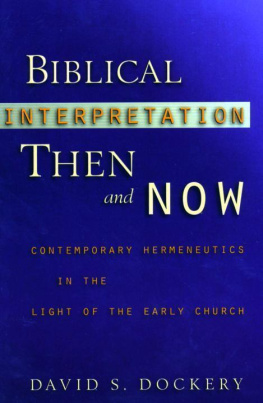
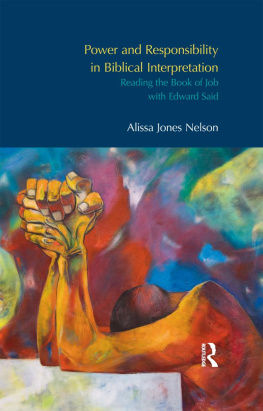
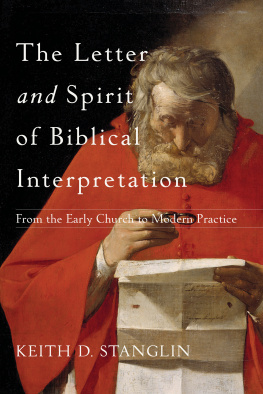



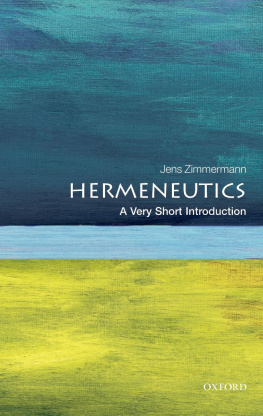
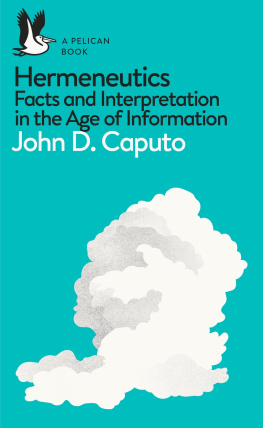
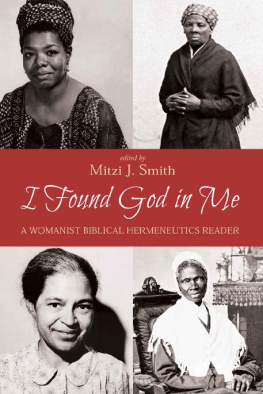
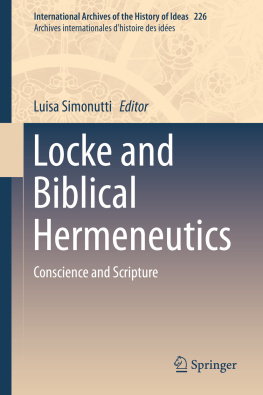
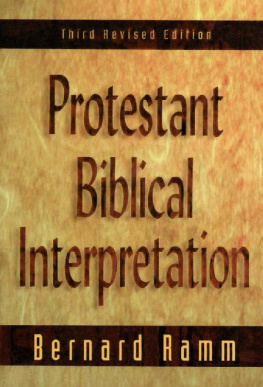
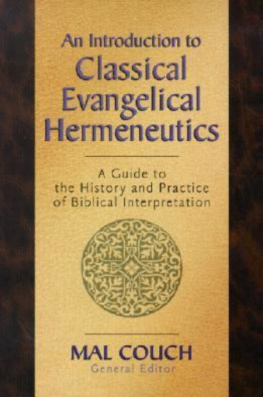
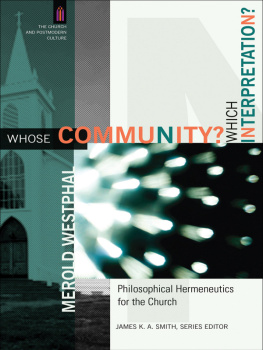


 umerous people have been extremely helpful in the course of my work on this book. My interest in the early church can be traced to my studies with B. K. Lackner, James Leo Garrett, and William Countryman. Those who awakened me to the vast world of contemporary hermeneutics include Lenore Langsdorf, Robert Longacre, Daryl Schmidt, and James Duke. My students in the hermeneutics classes and my colleagues at The Southern Baptist Theological Seminary also greatly challenged, informed, and improved my work. To each of these, and to many others, particularly Richard Melick for his perceptive and helpful input, I wish to offer my deep appreciation. The shortcomings of this work, however, should not reflect negatively on any of them, but largely whatever good is found here can be traced in some degree to them.
umerous people have been extremely helpful in the course of my work on this book. My interest in the early church can be traced to my studies with B. K. Lackner, James Leo Garrett, and William Countryman. Those who awakened me to the vast world of contemporary hermeneutics include Lenore Langsdorf, Robert Longacre, Daryl Schmidt, and James Duke. My students in the hermeneutics classes and my colleagues at The Southern Baptist Theological Seminary also greatly challenged, informed, and improved my work. To each of these, and to many others, particularly Richard Melick for his perceptive and helpful input, I wish to offer my deep appreciation. The shortcomings of this work, however, should not reflect negatively on any of them, but largely whatever good is found here can be traced in some degree to them. hat any of the writers of the early church wrote with the idea someone would later read their writings with the purpose of examining the continuity, discontinuity, and hermeneutical developments from one time period to the next is doubtful. The apostles and the church fathers wrote for their churches and against their opponents, both to advance and to defend the Christian faith as they interpreted it. Even though the articulation of their faith was influenced by their context, culture, tradition, and presuppositions, all shared a common belief in the Bible as the primary source and authority for the Christian faith. Studying and interpreting the Bible was natural for members of the early Christian community, having inherited the practice from late Judaism. Virginia Stem Owens has suggested that studying literature developed from the practice of studying and interpreting the Bible:
hat any of the writers of the early church wrote with the idea someone would later read their writings with the purpose of examining the continuity, discontinuity, and hermeneutical developments from one time period to the next is doubtful. The apostles and the church fathers wrote for their churches and against their opponents, both to advance and to defend the Christian faith as they interpreted it. Even though the articulation of their faith was influenced by their context, culture, tradition, and presuppositions, all shared a common belief in the Bible as the primary source and authority for the Christian faith. Studying and interpreting the Bible was natural for members of the early Christian community, having inherited the practice from late Judaism. Virginia Stem Owens has suggested that studying literature developed from the practice of studying and interpreting the Bible: